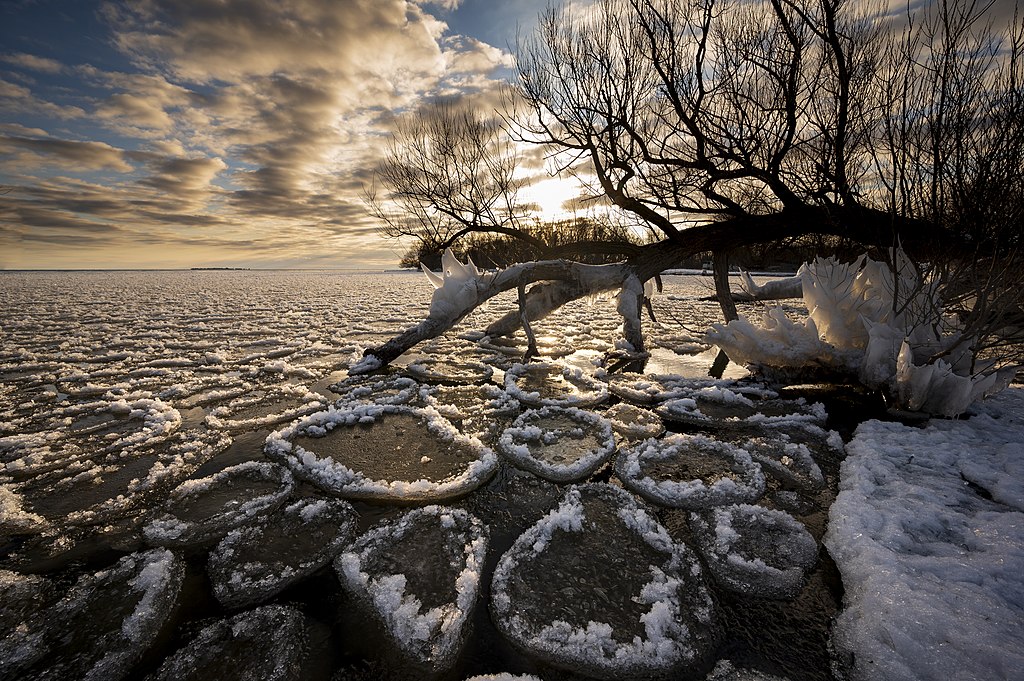Nova Scotia River
Pancake Ice: A Winter Wonder Weather Channel
Nova Scotia River
Pancake Ice: A Winter Wonder Weather Channel
If you live near a lake, river or have traveled by ship across the sea in the winter months, you may have seen pancake ice. The circular slabs can range anywhere from one to 10 feet in diameter and up to four inches thick, typically forming in areas with at least some wave action and air temperatures just below freezing.
Pancake ice can begin as a thin ice layer (known as grease ice) or slush on the water surface, which accumulates into quasi-circular disks. The "lily pad," or raised-edge appearance of pancake ice, can form when each disk bumps up against one another, or when slush splashes onto and then freezes on the slab's edge.

Pancake ice is a form of sea ice that consists of round pieces of ice with diameters ranging from 30 centimetres (12 in) to 3 metres (9.8 ft) and thicknesses up to 10 centimetres (3.9 inches), depending on the local conditions. It forms as a result of wave action on slush or ice rind.
Pancake ice features elevated rims formed by piling of frazil ice or slush onto the edges of pancakes when they collide, both due to random bumping into each other and because of periodic compressions at wave troughs. These rims are the first indication of the onset of the formation of the pancake ice from less consolidated forms of ice. Continue reading